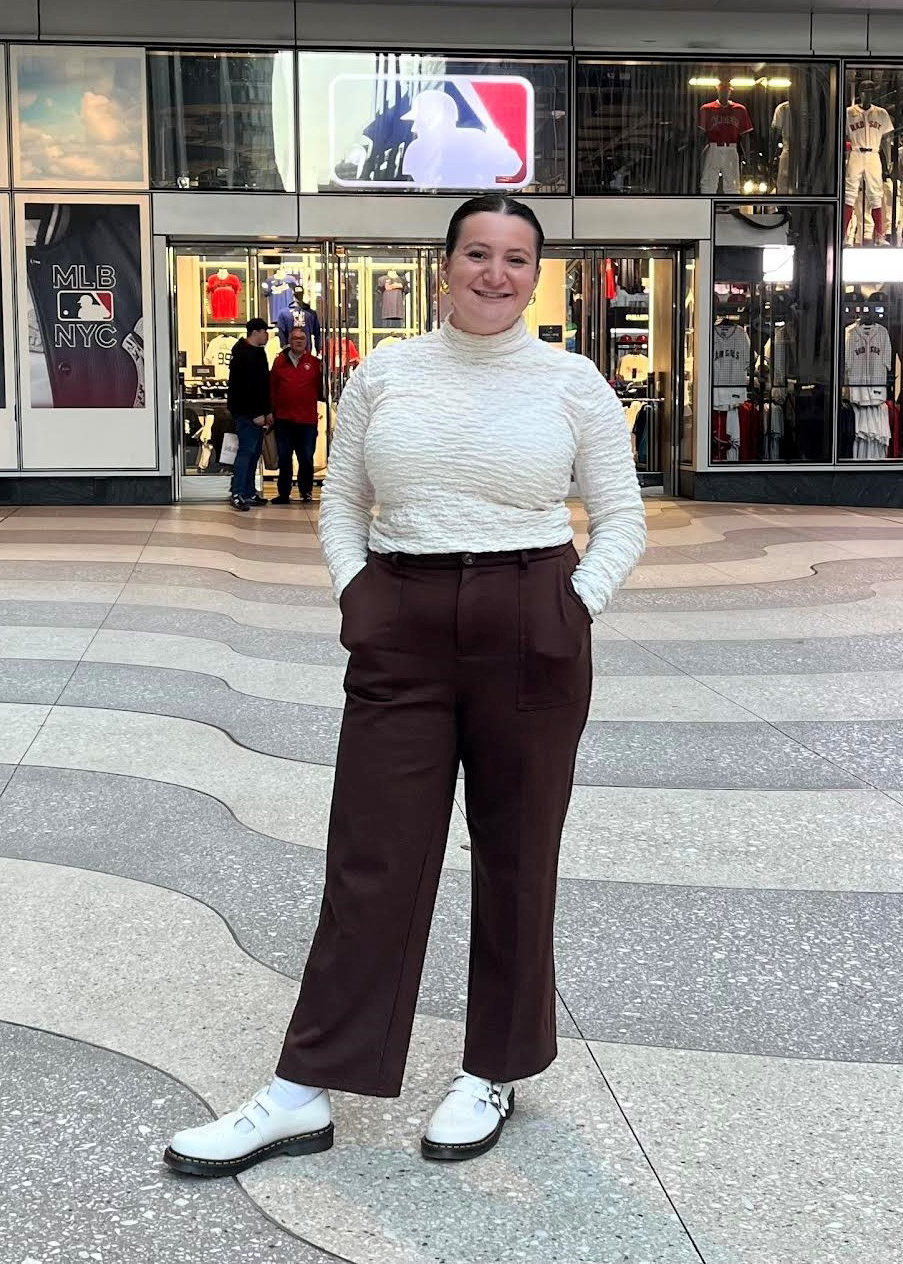


When her uncle and grandfather died unexpectedly, Sydney Salgado ’24 traveled to Mexico to attend their funerals, and what she noticed was thought provoking.
Funerals in Mexico were more celebrations of life than mourners grieving over the deceased. They were about deceased individuals living on as eternal spirits. And even long after their loved ones had died, friends and families celebrated birthdays and anniversaries of the deceased and family at gravesites.
Such observations pushed Salgado to pursue ethnographic research around Latin American cultures and how they view death in unique ways. At first, that research involved a 74-page Senior Integrated Project (SIP), enthusiastically supported by Associate Professor of Religion Alyssa Maldonado-Estrada, and developed when Salgado interviewed people in the cemetery near Mexico City where her grandfather and uncle were buried.
“I showed up to the cemetery every day, and no matter what time it was, I could converse with families, a flower salesperson, people cleaning tombstones, or people serenading tombs, and I learned so much from their stories and experiences while seeing them through my own eyes,” Salgado said of her honors-earning work.
And now, a special Kalamazoo College fellowship will take her abroad again to extend that research through more Latin American cultures. Salgado—a triple major in religion, Spanish and international area studies in Latin America from Highland Park, Illinois—is just the second K graduate to receive a Jerry Sherbin Fellowship, designed to send one graduating senior overseas to explore a topic of personal interest for one year.
The fellowship was established by alumnus Robert Sherbin ’79 and named after his father. Sherbin participated in study abroad at K by traveling to the University of Nairobi, where he was one of just six undergrads from the U.S. and the only K student. Later, as a senior, he received a Thomas J. Watson Fellowship, an external grant through the Watson Foundation, that allowed him to create and follow through with a one-year project overseas.
Salgado’s SIP on death culture in Mexico included three chapters: the first exploring the sources of Mexican practices surrounding the dead in Aztec and indigenous beliefs such as the nine layers of death, the Day of the Dead and the eternal nature of the soul; the second on material culture and relics that create connections between the living and the deceased; and the third on the economy of death as the living can buy flowers, food, toys, snacks, tombstones and more, all for the sake of the dead, in the immediate vicinity of Mexican cemeteries. She expects to see similar themes and practices, but some surprises and unique characteristics as well, with her Sherbin Fellowship itinerary taking her to places such as Colombia, Peru, Puerto Rico and Argentina.



In Colombia, for example, Salgado hopes to find evidence of “no nombre” or “sin nombre,” which means “nameless.”
“Crime rates are high in a lot of Latin American countries, and I’d argue that’s the case for Colombia,” Salgado said. “With those crime rates in smaller towns, Colombians will adopt unclaimed bodies and bury them. They’re treated like saints, so in addition to going to church, Colombians go to the cemetery to ask for protection, love, forgiveness or whatever it is they need.”
Locations such as Puerto Rico and Peru—with their large populations of indigenous people—could reveal practices even more rooted in indigenous traditions than in Mexico, Salgado said. And with Argentina, she will have opportunities to visit cemeteries such as La Recoleta, which contains the graves of notable people such as Argentinian military leaders, presidents and political figure Eva Perón.
“I want to go there because I didn’t have time with my SIP to explore things like the art design of tombstones,” Salgado said. “In Latin America, different objects symbolize different things. If you have a tree with birds on your tombstone, for example, it signifies a mother separating from her kids. There’s so much that goes into the design and architecture of these mausoleums and tombs, especially with them being historic. I would love to know more about the personalization of each.”
Salgado will send quarterly updates to Sherbin, the College and the Center for International Programs (CIP) on her progress abroad. Plus, upon returning to the U.S., she will promote her experience during the 2025 fall term, inspiring students to apply for the fellowship themselves. But in the meantime, she would like to thank the people who supported her candidacy for the Sherbin fellowship.
“I would have never dreamed of this opportunity in a million years until now,” Salgado said. “Having this fellowship is amazing, especially for a first-generation, lower-income student who would never think this could happen. When I told my parents I was applying for this, they said, ‘Oh, my gosh, that’s so exciting.’ And now I get to tell them that I’m traveling the world.”



















